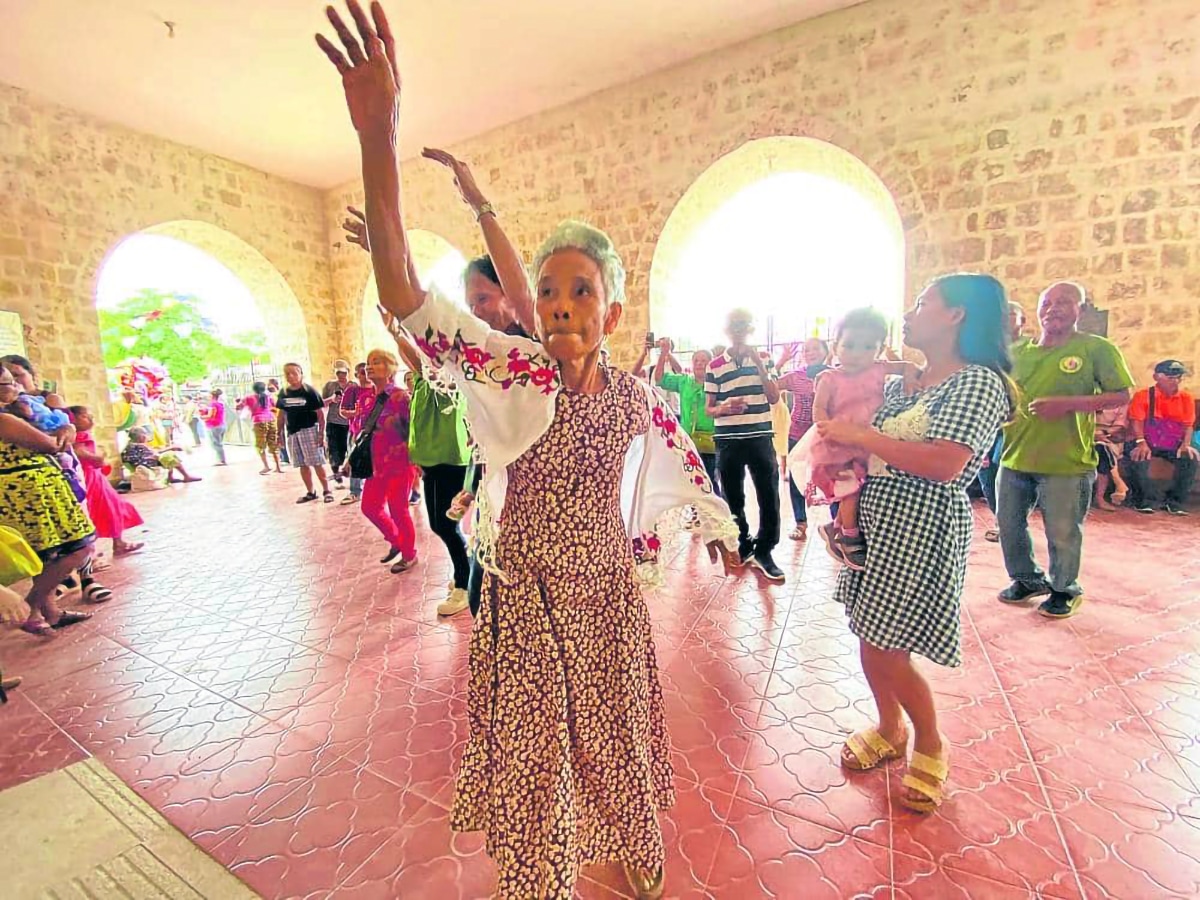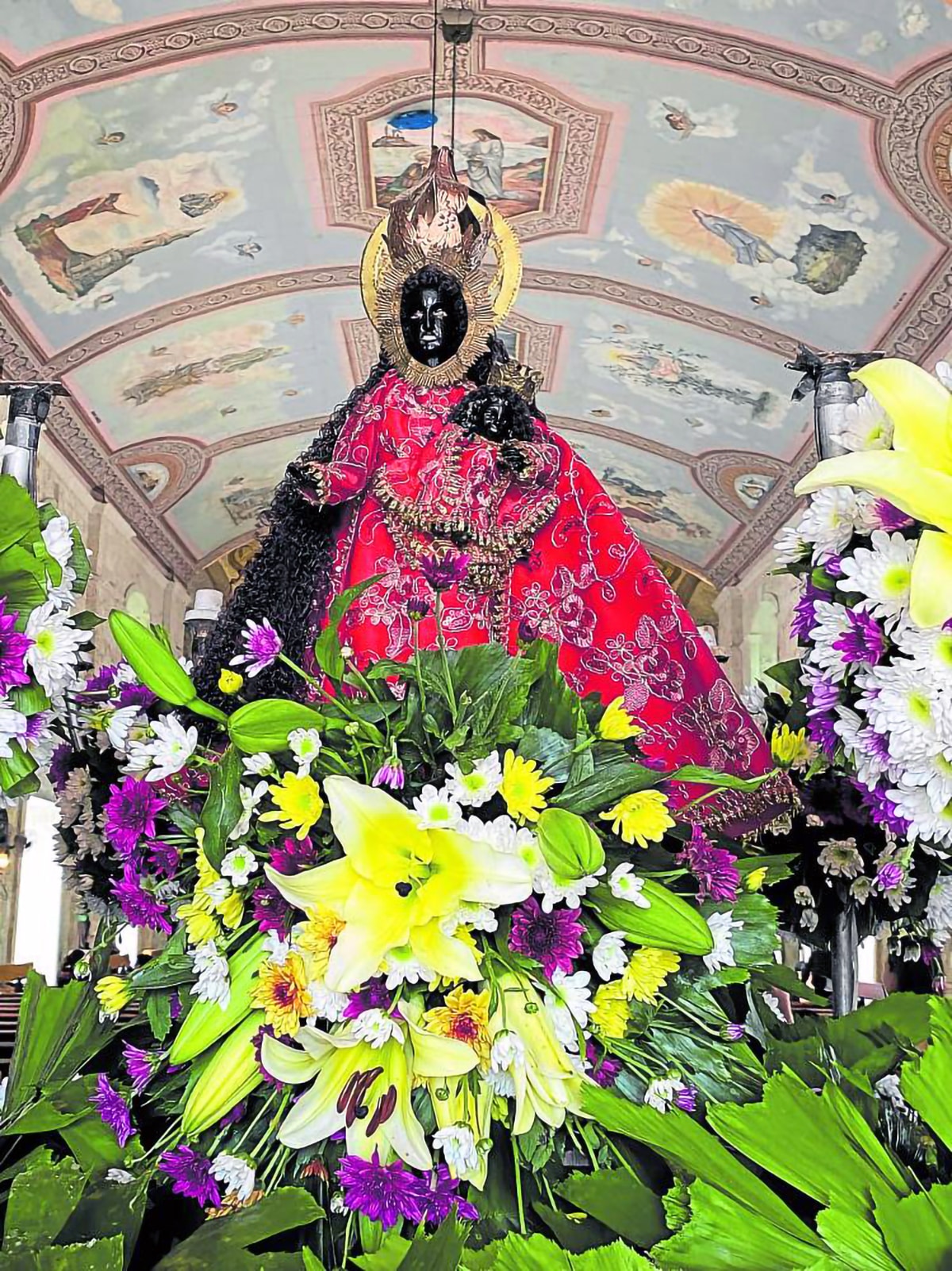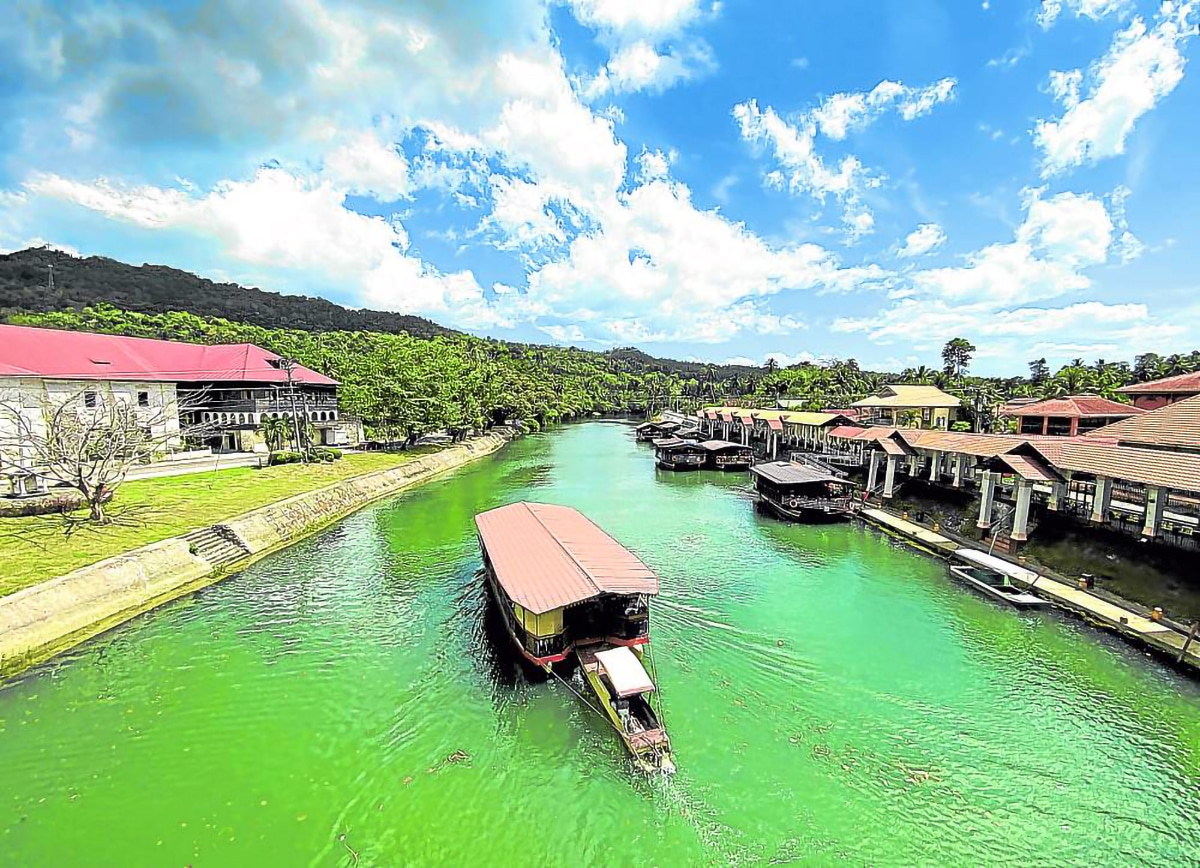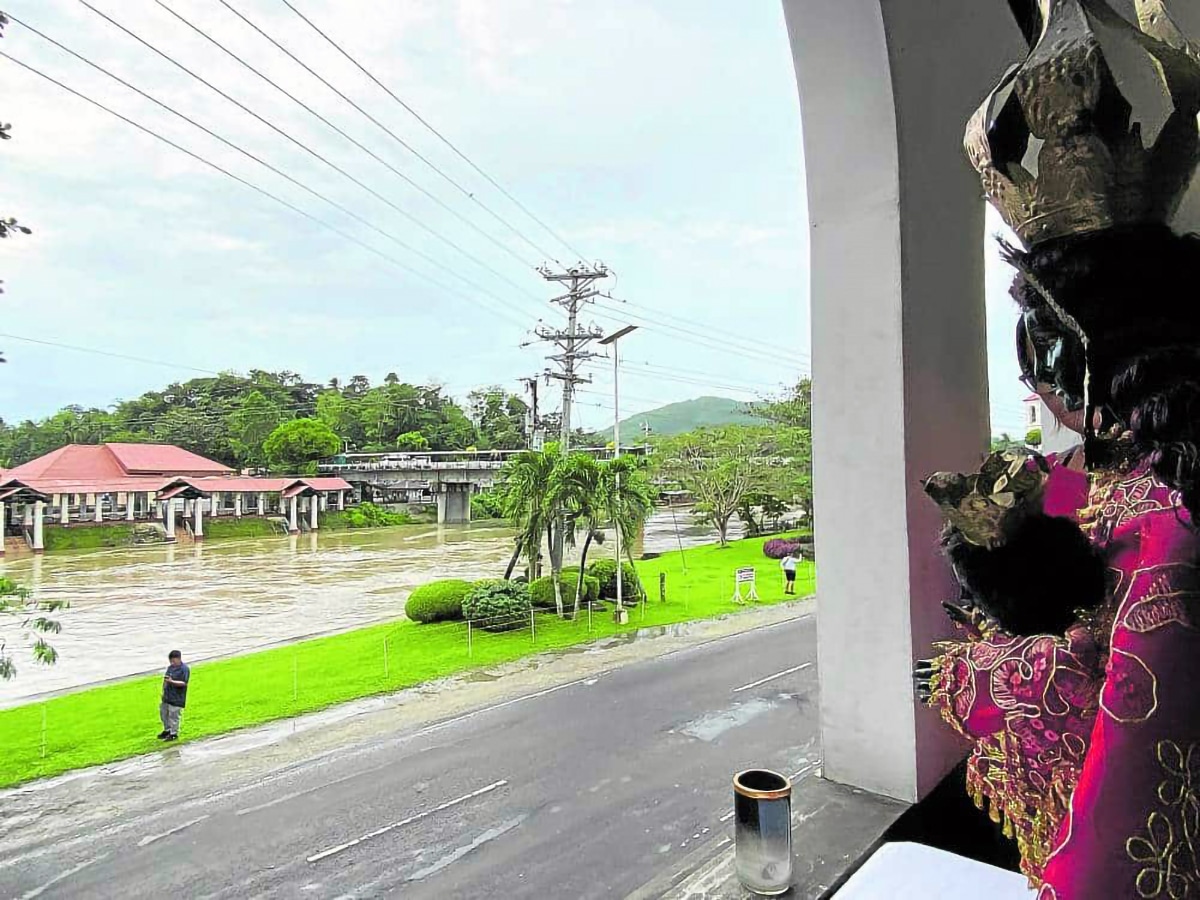Dancing in Loboc

FAITH AND GRACE Anecita Garao-Lingatong, 77, a native of Davao City, joins other pilgrims in dancing the “bolibong kingking” to pay homage to the Our Lady of Guadalupe de Extremadura in Loboc, Bohol, on May 24. Loboc, which hosts one of the island’s heritage churches, is also a major tourist attraction in Bohol for its river cruise and floating restaurants. —photos by Leo Udtohan
LOBOC, BOHOL, Philippines — She may not be a Boholano but 77-year-old Anecita Garao-Lingatong has never missed the feast day of the Our Lady of Guadalupe de Extremadura in Loboc town celebrated every May 24.
She would endure a daylong boat ride from her home in Barangay Matina in Davao City just to be in Loboc every year. Her annual pilgrimage started in the 1990s when her daughter married a native of Loboc that exposed her to the tradition. This, however, was stopped in 2020 and 2021 when the government restricted travel due to health protocols imposed to stop the spread of COVID-19 amid a pandemic that gripped the world.
When in Loboc, Lingatong does not only pray before the Black Madonna (Mary and the Child Jesus), she also dances the “bolibong kingking” in front of the “caro” (carriage) of the Our Lady of Guadalupe de Extremadura with the accompaniment of percussion instruments like gongs and drums.
READ: Starting April, tourists to pay more for Loboc river cruise
The Spanish image of the Our Lady of Guadalupe de Extremadura is dressed like a queen and holds the Child Jesus in one arm. Both the mother and child are dark-skinned, and belong to the tradition of the “Black Madonnas” of medieval Western Europe.
Article continues after this advertisementIn the Philippines, the only venerated image of the Lady of Guadalupe de Extremadura is enshrined in Saint Peter the Apostle Parish in Loboc.
Article continues after this advertisement
Our Lady of Guadalupe de Extremadura
In the Visayas, Catholics venerate only two black Madonnas: the Virgin de la Regla (Virgin of the Rule) in Lapu-Lapu City, Cebu province, and the Virgin de Guadalupe de Extremadura in Loboc.
For Lingatong, dancing before the image of the Our Lady of Guadalupe de Extremadura is a form of spiritual fulfillment.
“I’ve found solace and love from her,” she said.
Dancing in front of a religious image during a fiesta celebration is an interesting practice during Bohol fiestas. It is usually done after the Mass and lasts for the next two days.
Different towns call it by different names.
People in coastal areas in Maribojoc town and Tagbilaran City call the dance that started in 1843 “basao,” a precolonial Visayan term which means to play native musical instruments. “Basao” or “basal” means striking of the drum and gong (“pagbasal”).
Interior towns like Loboc, Sevilla and Bilar call it “bong bolibong king king,” an onomatopoeic taken from the sounds of drums and gongs.
In Panglao town, people call it “guronggong.”
There are a variety of dance steps in other places but one thing is common: dancers usually touch a part of their body that has an ailment so they would be healed from their afflictions.

Bohol’s famous Loboc River Cruise and floating restaurants
Family affair
Men played the drums and gong accompanied by the symbolic dance ritual mirroring the people’s faith to the Blessed Virgin Mary.
Some parents carry and “offer” their infants to be blessed while in front of the patron saint’s image. Others wave their handkerchiefs or raise candles before the icon.
Marites Jala, 49, and a resident of Loboc, said dancing the “bolibong kingking” had to be preserved for future generations.
Jala was taught to dance the “bolibong kingking” by her parents when she was young. Now, she brought her children to dance the ritual together with other devotees.
She wanted her three children age 28, 24 and 13 to practice the tradition, especially that many young people are no longer interested in it amid the “age of smartphones.”

PRAYERS FOR SAFETY An image of the Our Lady of Guadalupe de Extremadura is displayed in front of the Loboc River in Loboc, Bohol, in a practice called “dungaw” (to look out) to seek the patroness’ intercession to calm the swollen river on Jan. 12, 2023.
The Lady’s journey
Documents from the Saint Peter the Apostle Parish, show that the image of Our Lady of Guadalupe de Extremadura arrived from Spain in the Bohol capital of Tagbilaran on May 24, 1843.
But the crate where the image was placed could not be opened. The image was taken to various parishes but it seemed to skip the town of Loboc which was then plagued with cholera that brought much suffering and despair to the people.
The Recollect missionaries requested that the image of the Blessed Virgin Mary be allowed to visit the town.
They were amazed when the crate opened with ease when it arrived in Loboc, known as the “music capital” of Bohol with a population of 17,000.
People affected by the outbreak were healed and attributed the “miracle” to the intercession of the Our Lady of Guadalupe de Extremadura.
Since then, the veneration to the image was marked with a dance by the devotees.
Beacon of hope
For over a century, the Blessed Virgin Mary has been a beacon of hope for the people of Loboc.
In 1848, the town was hit by floods that devastated houses and destroyed properties.
Amid the chaos and destruction, the garment of the Virgin remained dry even as floodwaters reached the second floor of the convent of Loboc church where it was housed.
This miracle in different forms, according to parish documents, had been witnessed in the years 1848, 1874, 1876, 1889, 1947, 1955, 1964, 1984, 2014 and recently during Typhoon “Odette” (international name: Rai) in 2021.
When the Saint Peter the Apostle Parish or the Loboc Church was destroyed by the magnitude 7.2 earthquake on Oct. 15, 2013, it didn’t stop residents and devotees to dance even though it was held in a makeshift church.
The image miraculously survived during the quake. The altar collapsed but the image was unscathed.
It was only during the COVID-19 pandemic that the tradition was stopped due to restrictions to contain the spread of the virus.
According to professor Marianito Luspo, a historian and cultural worker, said the dance is not unique to Loboc but is practiced in many towns in Bohol. But Lobocanons stuck to the tradition, allowing locals and pilgrims to embrace the charm of the dance, he said.
The story of the Our Lady of Guadalupe de Extremadura has been a testament to the power of faith and devotion, locals say.
For Loboc residents, the Blessed Virgin Mary remains a beacon of light even in the midst of trials and darkness.